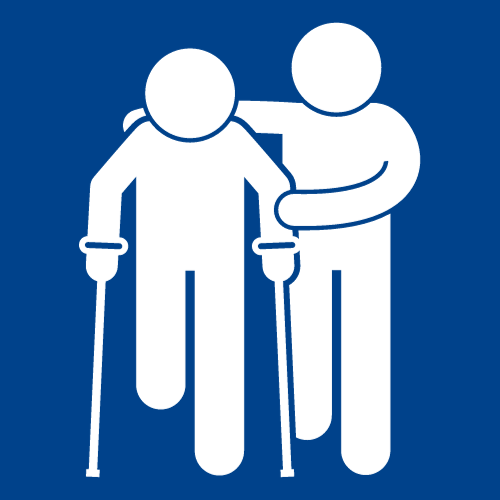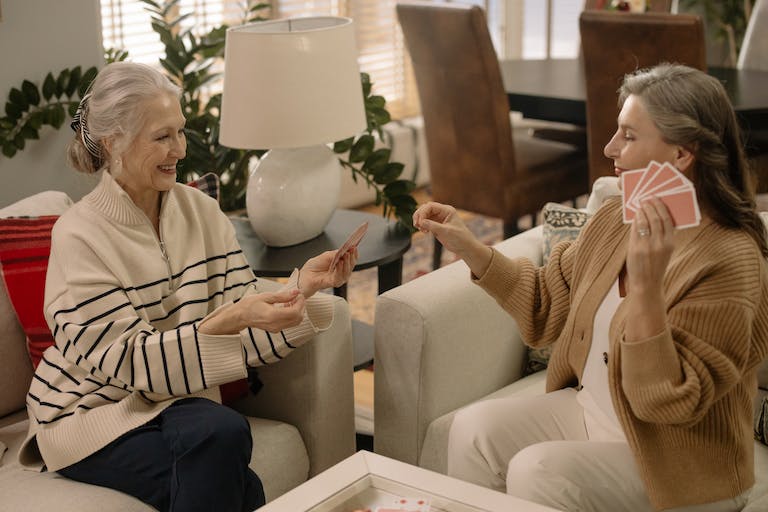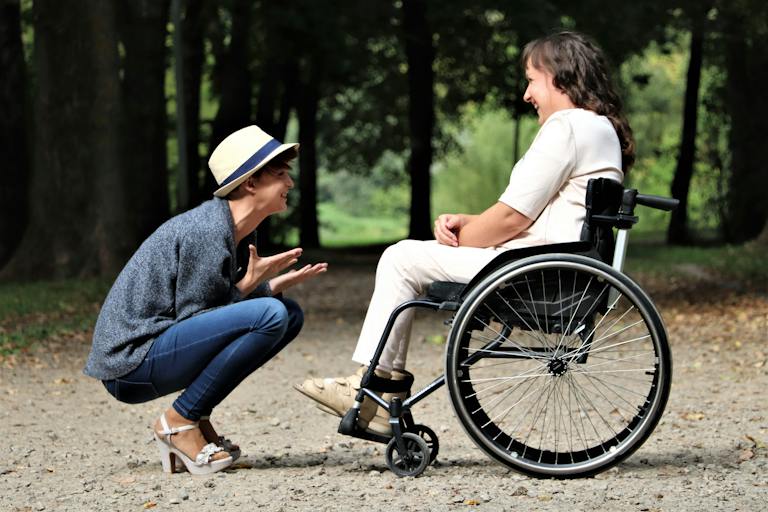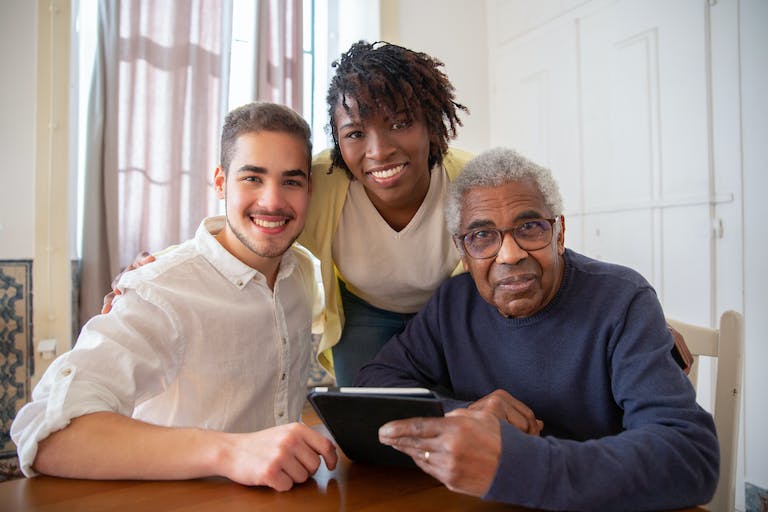As we age, it’s common to lose muscle mass and strength in our legs. This can make daily activities like walking, climbing stairs, or getting up from a chair more difficult. The medical term for age-related loss of muscle and strength is sarcopenia. For the elderly, weak legs increase the risk of falls and fractures leading to hospitalization or further mobility issues.
The good news is that no matter your age, you can take steps to maintain and even rebuild leg strength. Strengthening your leg muscles provides many benefits beyond just improving mobility. It also:
- Preserves independence for activities of daily living
- Maintains bone density to prevent osteoporosis
- Supports joint health and prevents arthritis
- Improves balance and prevents falls
- Boosts metabolism and supports weight loss
- Reduces risk of heart disease, diabetes and other chronic illnesses
As a physical therapist specializing in geriatric patients, I often prescribe leg strengthening programs to help my patients stay active and independent as they age.
In this article, I’ll explain safe, effective exercises to strengthen weakened legs in older adults. I’ll also provide tips to get started and suggestions for modifying the workouts based on your current fitness level.
Causes of Weak Legs in the Elderly
To understand how best to rebuild strength, it helps to first identify what’s causing muscle weakness in the first place. Here are some of the most common reasons seniors lose strength in their legs:
- Sarcopenia: Age-related loss of muscle mass that affects up to half of adults over 80 years old. Contributing factors include reduced exercise, malnutrition, hormonal changes and increased inflammation.
- Osteoarthritis: Wear-and-tear arthritis causes joint pain, swelling, and stiffness that can make movement difficult. Limiting activity due to arthritis further accelerates muscle loss.
- Obesity: Carrying excess body fat strains muscles, tendons, ligaments, and bones, especially weight-bearing joints like the knees and hips. Excess fat also contributes to inflammation and insulin resistance, which accelerates sarcopenia.
- Peripheral Artery Disease (PAD): Plaque buildup in the leg arteries restricts blood flow to the muscles starving them of oxygen and nutrients needed to function properly. This commonly causes calf or thigh pain with activity.
- Chronic Diseases: Conditions like heart disease, lung disease, diabetes or neurological disorders make activity more difficult leading to deconditioning and disuse muscle atrophy. Medications used to treat these conditions can also contribute to weakness.
- Injuries: Traumatic injuries like fractures or muscle strains heal slowly in seniors. Protecting the injury with a cast, crutches or immobilization leads to significant atrophy in as little as 2 weeks.
- Poor Nutrition: Inadequate protein, calories, vitamin D, antioxidants and omega-3s accelerates loss of muscle tissue. Dehydration and electrolyte imbalances also negatively impact strength.
As you can see, there are many reasons seniors lose leg strength, but the good news is proper exercise and nutrition can help rebuild and maintain muscle at any age. Talk to your doctor about what factors are directly impacting your leg weakness before starting an exercise program.
Balance and Stability Exercises
I recommend starting a leg strengthening program by first addressing balance and stability. Balance is crucial for preventing falls, which can lead to serious injuries and further mobility limitations. Here are some great exercises to improve balance:
Static Balance Exercises
Stand next to a wall, chair or sturdy table for support at first. Lift your right foot just off the floor without holding on – stand as long as possible up to 30 seconds. Repeat on left foot. Over time remove support so you are balancing independently.
As this gets easier, progress to balancing on foam, pillow, or uneven surface to increase difficulty. You can perform these standing or seated.
Dynamic Balance Exercises
Walking heel to toe in a straight line – as if on a tightrope. Walk as long as possible up to 30 feet if able.
Practice controlled squats bringing your butt just above a chair behind you without sitting down. Add challenge by closing eyes during squats.
Controlled kicking – swing one leg forward and back without holding on to anything. Stay centered without rotating. Repeat with eyes closed.
Tai Chi, yoga, and dance movements like grapevines or pivot turns are also excellent for balance.
Aim to perform dynamic and static balance training every day as a warm-up before progressing to muscle strengthening. Stop immediately if you feel unsteady to prevent falls. Have a chair or walker nearby for support.
Strength Training Exercises
Once your balance is improved, shift focus to building leg muscle mass and power with strengthening exercises. Below, I recommend techniques ranging from basic to more challenging:
Seated Leg Extensions
Sit upright with your feet flat and your knees bent. Straighten one leg directly in front of you. Flex your foot upwards throughout the motion. Hold for 2 counts, then lower control for 2 counts. Repeat 10-15 times, then switch legs.
Seated or Standing Leg Curls
Stand holding chair or sit with knees bent and feet flat. Raise one heel off floor pulling foot and knee backwards. Squeeze hamstring. Hold 2 counts then controlled lower for 2 counts. Do 2 sets of 10-15 reps per leg.
Mini Squats
Stand with feet slightly wider than hips behind chair. Push butt back and bend knees just 20-30 degrees as if to sit down. Hold 2 seconds while squeezing quads and glutes (bum). Return to start. Do 2-3 sets 10-15 mini squats. Rest 1 minute between sets.
Wall Squat Holds
Stand with your back against the wall, feet 12 inches in front. Slide down the wall, bending knees to a 45- or 90-degree squat (as able). Hold for 30-90 seconds. Repeat three times, resting 1 minute between sets. You can start this exercise seated against a wall if you are unable to perform it standing.
Calf Raises
Stand with your feet hip-width apart, holding onto a chair or wall for balance. Lift both heels off the floor, going up onto the tips of your toes. Hold for 2 seconds. Lower controlled to start for 2 counts. Repeat 10-15 reps for 1-2 sets.
Step Ups
Face 12 inch step or sturdy stool. Step one foot fully up onto platform. Push down through heel to straighten (extend) that knee and hip bringing entire foot top of step. Step back down to start controlled. Repeat 10 times on right leg then switch to left. 2 sets per side.
Side Leg Raises
Stand holding a chair, feet together. Keep your knees straight and lift your right leg out to the side. Raise as high as is comfortable. Hold for 2 seconds. Slowly lower the leg to start in a controlled position. Repeat 10-15 times, then switch sides. Do two sets per leg.
Hamstring Curls on Exercise Ball
Lie face up with arms at sides, calves resting on 2-3 ft in front of stability ball. Push into feet to lift hips off floor and roll ball towards bum bending knees. Roll back out straightening legs fully. Repeat 10-15 times. 2-3 sets.
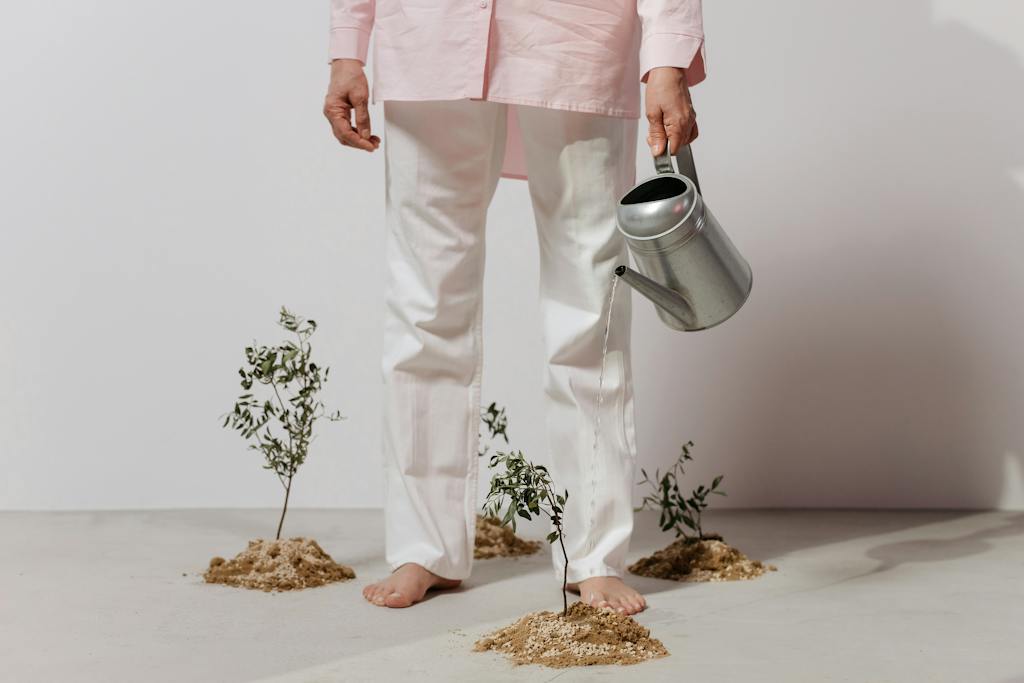
Additional Tips for Weak Elderly Legs
Rebuilding leg strength takes time and consistency. It’s completely normal for progress to feel painfully slow starting out. Stick with it! Here are some tips to accelerate your results and make the exercises more manageable:
- Consult Your Doctor First – Get cleared for exercise especially if you have heart conditions, diabetes, PAD or knee/hip arthritis. Your physician may have useful advice or precautions specific to your health.
- Start Incredibly Light – Better to start with such light resistance you feel nothing than push too hard and get injured. Zero pain should be the goal at first. If an exercise causes pain in joints, tendons, bones or muscles, stop immediately.
- Add Repetitions Gradually – Build muscular endurance by adding 1-2 additional repetitions per set every 3 workouts before considering adding external resistance or weight. Take this slow!
- Try aquatherapy exercises. Doing these leg-strengthening exercises in the pool takes pressure off joints and makes it easier when just starting out.
- Use Assistive Devices: Chairs, parallel bars, walls, or railings provide extra stability and confidence, minimizing the risk of falls. Allow yourself to give full effort to strengthening your legs.
- Consume More Protein – Shoot for 25-30g protein in a meal containing at least 2 servings legumes, nuts, seeds, eggs, seafood or lean poultry. Time protein intake 60-90 minutes pre and post strengthening workouts.
- Stay Hydrated – Carry a water bottle everywhere sipping often. Dehydration exacerbates muscle fatigue and will limit your training capacity.
- Prioritize Rest Days: Muscles strengthen and grow during rest periods, not the workouts themselves. Schedule every other day off from training legs to recover properly between sessions.
I hope these strengthening exercises, safety tips, and nutritional advice provide you with a framework for rebuilding stability, balance, and leg power. Stick with it long-term, remembering that progress is made in small increments over months and years.
With consistency, leg weakness can be completely reversed at any age to restore mobility and freedom in your senior years!
